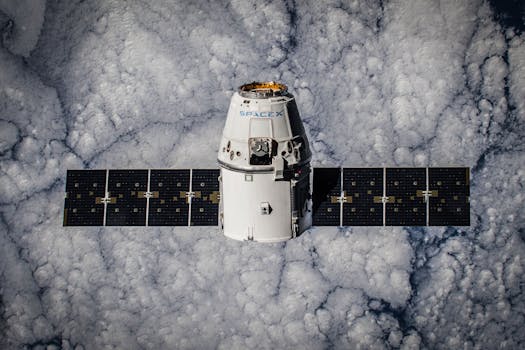Beyond the Atmosphere: The Future of Satellite Technology for Surveillance and Connectivity

Beyond the Atmosphere: The Future of Satellite Technology for Surveillance and Connectivity
The future of satellite technology is rapidly evolving, with advancements in surveillance and connectivity capabilities. As the world becomes increasingly dependent on satellite-based services, the demand for more efficient and effective satellite technology is on the rise. In this article, we will delve into the latest developments and innovations in satellite technology, exploring its potential applications and implications for various industries.
Satellite technology has come a long way since the launch of the first artificial satellite, Sputnik, in 1957. Today, satellites play a vital role in our daily lives, from providing global navigation and communication services to enabling weather forecasting and remote sensing. The increasing use of satellite technology has also led to the development of new industries, such as satellite manufacturing, launch services, and satellite-based data analytics.
Advancements in Satellite Surveillance
One of the most significant applications of satellite technology is surveillance. Satellites equipped with high-resolution cameras and sensors can capture detailed images of the Earth’s surface, allowing for monitoring of environmental changes, tracking of natural disasters, and detection of human activities. The use of satellite surveillance has become increasingly important for military, intelligence, and law enforcement agencies, as it provides a means of gathering critical information without the need for physical presence.
Recent advancements in satellite surveillance technology have led to the development of smaller, more agile satellites that can be launched at a lower cost. These satellites, known as smallsats or cubesats, are equipped with advanced sensors and cameras that can capture high-resolution images and transmit them back to Earth in real-time. The use of smallsats has also enabled the creation of satellite constellations, which can provide persistent surveillance of specific regions or targets.
Satellite Connectivity: The Future of Global Communication
Satellite connectivity is another area where significant advancements are being made. With the increasing demand for global communication services, satellite technology is playing a vital role in providing connectivity to remote and underserved communities. Satellites can transmit data, voice, and video signals over long distances, enabling communication between people and devices in even the most remote locations.
The development of new satellite constellations, such as OneWeb and Starlink, is revolutionizing the satellite connectivity industry. These constellations consist of hundreds of small satellites that work together to provide high-speed, low-latency internet connectivity to users around the world. The use of satellite connectivity is not limited to consumer applications; it also has significant implications for industries such as aviation, maritime, and emergency response.
Challenges and Opportunities
While satellite technology offers many benefits, it also poses significant challenges. One of the major concerns is the increasing amount of space debris in Earth’s orbit, which can pose a risk to operational satellites and other space-based assets. The development of sustainable and responsible satellite technologies is essential to mitigating this risk and ensuring the long-term viability of satellite-based services.
Despite these challenges, the future of satellite technology looks promising. The increasing demand for satellite-based services, combined with advancements in technology and reducing costs, is creating new opportunities for innovation and investment. As the satellite industry continues to evolve, we can expect to see new applications and use cases emerge, from satellite-based Earth observation to satellite-enabled IoT connectivity.
In conclusion, Beyond the Atmosphere: The Future of Satellite Technology for Surveillance and Connectivity is a rapidly evolving field, with significant implications for various industries and aspects of our lives. As satellite technology continues to advance, it is essential to address the challenges and opportunities that arise, ensuring that the benefits of satellite technology are realized while minimizing its risks.

